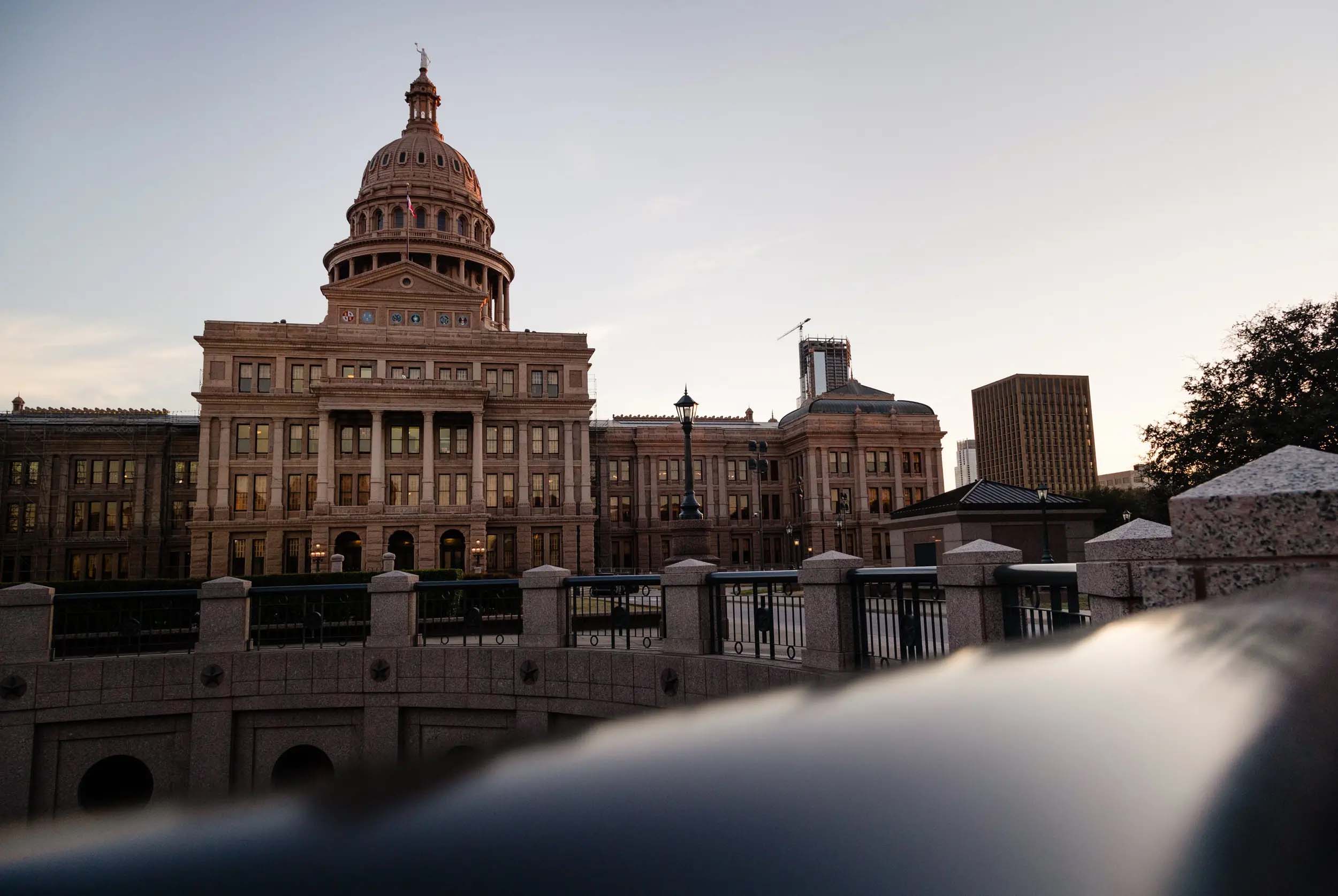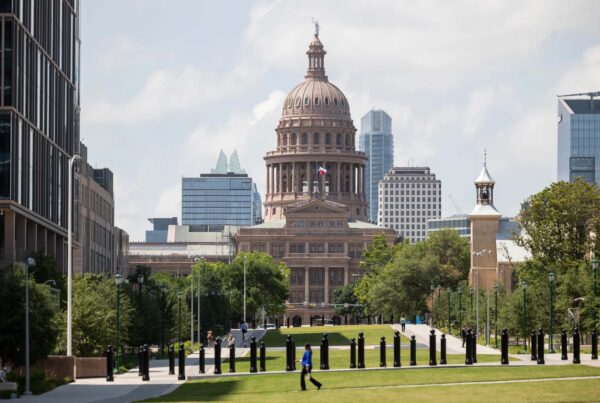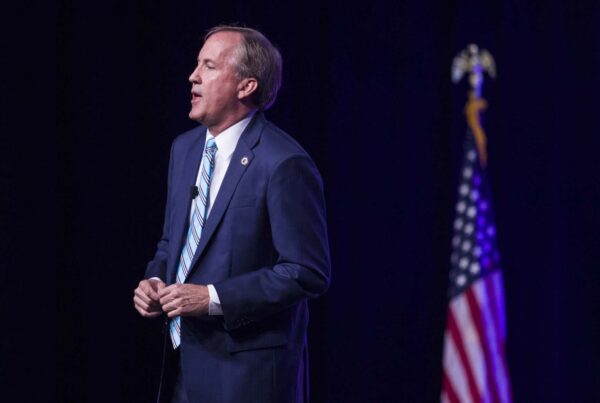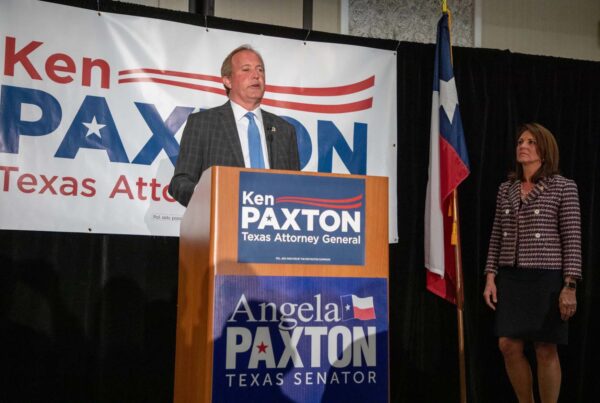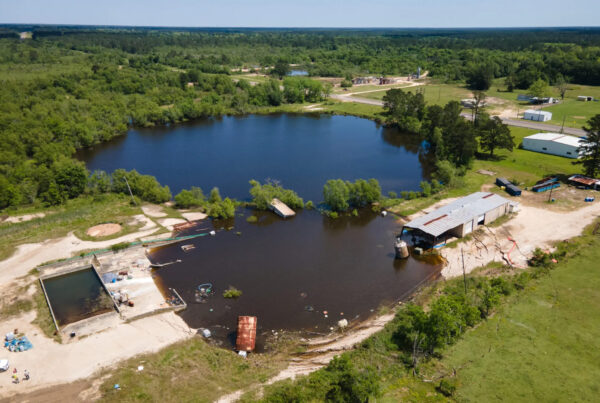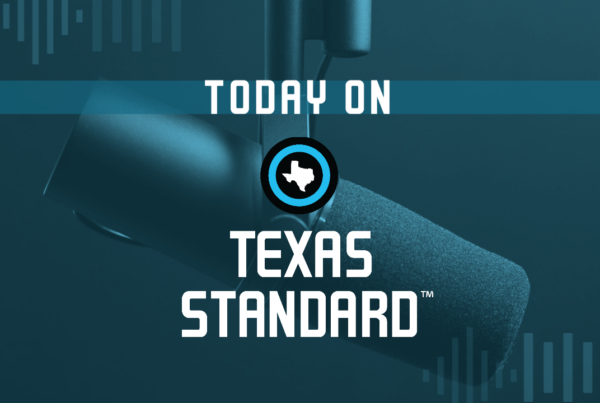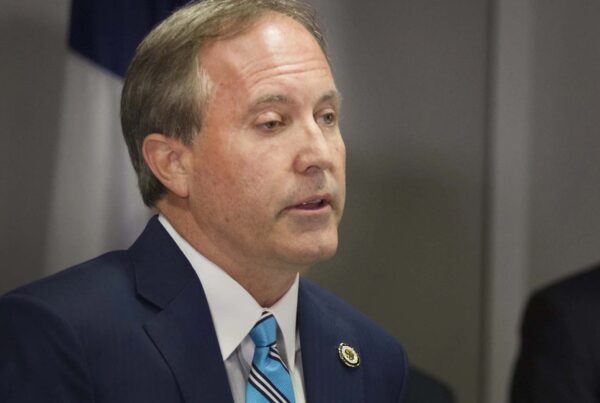From The Texas Tribune:
Texas House and Senate budget writers have struck a deal on a $321.3 billion two-year spending plan that takes advantage of a historic cash windfall to invest unprecedented amounts of money into tax cuts, mental health, state parks, colleges and universities, the state’s energy grid, broadband and water infrastructure, according to documents made public Thursday.
The 1,028-page compromise plan, forged over weeks of negotiations between the two chambers, is expected to get a final vote Friday. Negotiations were led by House Appropriations Committee Chair Greg Bonnen and Senate Finance Committee Chair Joan Huffman, both Houston Republicans.
Known as the General Appropriations Act for the 2024-25 cycle, the joint-chamber compromise on House Bill 1 seeks to spend $144.1 billion in general revenue, including an agreement to spend $12.3 billion in new money for property tax cuts. Some of those funds are tied to bills still in flux in the Legislature or are dependent on voters to pass in a constitutional election later this year.
Combined with a separate supplemental budget agreement that spends just under half of the state’s historic $32.7 billion cash surplus, the new plan would leave billions in anticipated tax revenue untouched at a time when the state has more money coming in than lawmakers are constitutionally allowed to spend, triggering criticism from Democrats that more should have been done for the state’s foster kids, public schools, retired state employees and public health system.
The highly anticipated supplemental proposal revealing spending for this year was also released Thursday by budget leaders. In it, about $15 billion in general revenue will go to a higher education endowment, school safety grants, state employee pay raises, enhanced retirement benefits for teachers, mental health hospitals, border security, flood mitigation and water infrastructure, Medicaid costs, state debt reduction and other items.
The so-called supplemental plan in Senate Bill 30 would add that spending to the state’s current budget, which runs until the end of August.
Legislation supplementing the current budget is a routine task each session and allows budget writers to shore up any differences that appeared in costs and actual revenue during the previous two years.
Both plans are expected to get floor votes in each chamber on Saturday. The chambers must pass the budget as is, with no more changes, if they want to avoid going into a special session to start over on the massive process. After they pass, the bills will go to Gov. Greg Abbott, who has line-item veto power, and to the comptroller to certify that it’s a balanced budget, as required by the state constitution.
Property tax cuts
The proposed two-year spending plan gives the first peek in weeks on where the two chambers stand on their dueling property tax-cut proposals. After weeks of bickering on social media, the House and Senate have agreed to spend $17.6 billion on property tax relief. Of that, $12.3 billion is new spending while $5.3 billion is to maintain tax cuts approved in previous years.
But how exactly lawmakers intend to deploy that money remains to be seen. Legislators can only spend that extra $12.3 billion if they hash out a deal on a final tax-cut package in the waning days of this year’s legislative session.
Leaders in both chambers agree they should send a certain amount to school districts to cut their tax rates.
They also appear to agree the Legislature should put dollars toward a huge boost in the state’s homestead exemption on public school taxes, the chunk of a home’s value that can’t be taxed by school districts. The Senate had wanted to boost that exemption from $40,000 to $70,000 with an additional bump for seniors.
The House upped the ante by boosting that amount to $100,000 — a Hail Mary to get Senate tax-cut warriors to accept a House proposal to lower the state’s annual cap on how much taxable home values can grow each year from 10% to 5%, and to extend that benefit to businesses.
But the budget released Thursday doesn’t mention the homestead exemption, though it includes enough money to pay for it, according to tax experts. It also doesn’t mention the appraisal cap proposal, which wouldn’t come out of the state budget.
No raises yet for teachers
Texas Education Commissioner Mike Morath was approved for a $105,000 pay raise, which would have bumped his salary to $325,000. But an agency spokesperson said Morath will decline the raise.
Meanwhile, pay raises for teachers and other public education employees, described as a priority by leadership, are in flux – held hostage by a fight over private school vouchers, as is any bump in schools’ basic allotment from the state, which hasn’t changed in four years even as inflation has skyrocketed.
Neither are included in the current budget compromise, but House Bill 100earmarks $4 billion for an increase to the basic school funding allotment and would help pay for an unspecified raise that would be up to each individual district.
That bill is, however, in jeopardy after the Senate tacked on a last-minute provision that would steer part of that money to a private-school voucher program. The so-called “Education Savings Account,” which would take money from public schools and give to some parents to pay for private or religious school tuition, is being heavily pushed by Abbott and Lt. Gov. Dan Patrick.
But the House vehemently opposes vouchers. The measure has died several times over the years because rural Republicans and Democratic lawmakers say it would destroy their public schools. Still, the budget compromise allocates an initial $500 million for a voucher-like program.
Without the money in HB 100, lawmakers will spend $23.9 billion in 2024 and $24.7 billion in 2025 to fund the Foundation School Program, the primary source of state funding for school districts — which means no increase in school allotments for the next cycle.
For school safety, another priority for both chambers, lawmakers propose giving the Texas Education Agency $1.1 billion this year to award grants to school districts, and another $300 million directly to school districts would be included for the next budget cycle if a school safety measure to require campus active-shooter plans and mental health training for certain employees — still under debate in the Legislature — is passed.
New money for tuition freeze – if DEI passes
Before the start of the legislative session, university systems proposed that they would keep tuition flat for two years if the state provided an extra $1 billion in funding for expensive areas such as employee health insurance, the program that provides free tuition to children of veterans, and more funding for regional comprehensive universities.
State lawmakers in the compromise allocated a few hundred million less than proposed — and stipulated that the extra funding is contingent on the legislature passing two bills designated as priorities by Patrick that would address the future of faculty tenure and ban diversity, equity and inclusion offices at public universities.
Texas lawmakers also included $3 billion dollars in the supplemental budget for a new endowment to fund non-flagship universities that are trying to improve their research operations and rise in the national rankings.
The Texas University Fund is contingent on legislation and needs to be approved by voters in November. It would create the fund for the University of Houston, Texas Tech University, Texas State University and the University of North Texas, with the opportunity for universities who don’t access money from the separate Permanent University Fund to eventually qualify for the funding if they reach certain academic goals.
More cash for retired teachers and current state employees, not for state retirees
Budget writers declined to fund any pay increase — either a cost-of-living adjustment or an extra paycheck this year — for Texas’ 123,000 retired state employees, even as the proposed budget plan allocates billions in surplus cash on pay bumps for almost every other employee in the public sector, including retired teachers and active state employees.
Teacher pay is still in negotiations, but the compromise includes a 5% pay bump for current state employees this year and next year. Another $5 billion would provide retired teachers with a one-time payment and a cost-of-living adjustment if lawmakers pass Senate Bill 10.
But, how much retired teachers will get is unclear as lawmakers have not struck a deal.
The upper chamber originally wanted a $7,500 one-time payment for retired teachers age 75 and older, a 4% increase to their checks if they’ve been retired for more than 10 years and a 2% increase if they retired between late 2013 and before the end of 2021.
Meanwhile, the House calls for a $5,000 one-time payment to retired teachers age 70 or older and give a 6% increase to retirees’ monthly checks if they retired before 2004, a 4% increase if they retired between 2004 and 2014, and a 2% increase if they retired between 2015 and 2021.
Asking voters to approve broadband
The budget compromise includes $1.5 billion for a broadband infrastructure fundto help pay for development and funding of broadband and telecommunications services across the state, but the measure relies on voters to approve it in a November constitutional election.
Legislation creating the fund has cleared both chambers and is now in negotiations on the details. The legislation allows for $5 billion, but the newest budget stops short of that.
An estimated 7 million Texans don’t have access to high-speed broadband internet access.
No funds for prison A/C, some new youth lockups
A big loss for the House was a noticeable lack of direct funding for prison air conditioning. The chamber had proposed spending $545 million to cool some of the state’s sweltering lockups, in which the relentless Texas heat has baked prisoners to death, likely contributed to severe staff shortages and cost taxpayers millions of dollars in wrongful death and civil rights lawsuits. But senators, who offered no money toward the project, won in conference negotiations. No money was set aside to install air conditioning in prisons.
The final budget version also includes $200 million to build new youth lockups under the ever-troubled Texas Juvenile Justice Department. Children have been imprisoned in dire conditions due to severe understaffing in Texas’ five youth prisons. While some advocates and lawmakers called for the closure of the units after the crisis peaked last year, the House and Senate agreed instead to build additional facilities. The new units would be for girls, violent teens and those with the most severe mental health needs.
New funds for water infrastructure and flood prevention
A new state water fund intended to jumpstart massive water supply projects and fix aging water infrastructure across Texas would receive $1 billion in the supplemental budget if the idea is approved by both lawmakers and voters this fall. The funds would in part be used to create 7 million acre-feet of water in Texas — an amount that’s four times what Lake Livingston, one of the state’s largest reservoirs, can hold.
A little over a billion dollars would be allocated to prevent flooding in Texas. Lawmakers included $550 million for coastal barrier projects and the “Ike Dike,” a huge gate system proposed for the mouth of Galveston Bay in the budget draft. Another $625 million in the supplemental budget would go toward Texas’ Flood Infrastructure Fund, a bucket of money used to finance flood-prevention projects included in the state’s first flood plan, which is currently being developed.
Funding the fight against fentanyl
Lawmakers appropriated $18 million over the next two years for opioid overdose prevention, education, and overdose reversal medication. More than 90% of those funds will go toward buying opioid overdose reversing drugs like naloxone for police, health care providers and educators who interact with people at high risk of overdose, particularly fentanyl.
The funding will be available through the University of Texas Health Science Center at San Antonio, which already runs a program to provide naloxone across the state. That program ran out of funding halfway through last year after high demand, leaving many groups fighting to prevent opioid overdose deaths without a lifesaving tool.
For Abbott, cracking down on fentanyl, a powerful synthetic opioid, is a legislative priority. Lawmakers focused on stiffening criminal penalties for those who sold or distributed the drug instead of public health efforts to tackle a growing overdose death crisis in the state. Still, the funding for overdose reversal medication was a win for public health and drug policy experts.
No cash for attorney general’s whistleblower lawsuit
Budget writers had already declined to allocate $3.3 million to pay a proposed settlement by embattled Texas Attorney General Ken Paxton in connection with a whistleblowers’ lawsuit filed by former employees who said they were fired for reporting allegations of misconduct by Paxton.
In both the supplemental budget compromise and the 2024-2025 spending plan, lawmakers added additional language banning Paxton from using funds from his office budget to pay the settlement.
Paxton’s budget request was met with an investigation into the allegations, launched in March by the House General Investigating Committee, and included a public hearing on Wednesday detailing the stunning allegations.
On Thursday, the committee voted unanimously to recommend articles of impeachment against Paxton to the House.
T.J. Turner, an attorney for whistleblower David Maxwell, said lawmakers had publicly affirmed every claim made by his client and the other whistleblowers and that the plaintiffs had “acted with integrity and honor.”
The refusal to pay the settlement, Turner said, punishes the wrong people.
“It is impossible to comprehend how, after such a remarkable hearing, the legislature could continue to hang our clients out to dry by refusing to fund the settlement that would pay the wages and other damages they suffered because of their brave, selfless actions,” he said.
Border security fully funded – and then some
The new budget plan allocates more than $5 billion for border security over several agencies, including $1 million for a border wall, almost $1.4 billion for Abbott to use at his discretion for border operations, and nearly $750 million to the Texas Department of Public Safety for border security. Early versions of the budget had the total at a lower amount, around $4.6 billion.
And while legislation creating the Texas Border Force — a new state immigration enforcement unit under the Texas Department of Public Safety — is still in negotiations, the compromise allocates $64 million for that program.
House Bill 7 would also make it a state crime for migrants to enter the state anywhere but a port of entry, create a mandatory 10-year minimum sentence for human smugglers, and devote $100 million for new detention centers, courts, security and economic development projects for border communities.
No rate relief, but maybe more power plants
Legislators removed a provision from the supplemental budget that could have helped some electricity and gas customers in Texas who are paying off debt from the 2021 winter storm. Power prices and natural gas prices spiked during that disaster. Some gas utilities and electric cooperatives used ratepayer-backed bonds to cover the costs and passed the bill onto ratepayers. Legislators had considered using $3.9 billion from the budget surplus to help pay that off, but issues of how to do so fairly arose.
The draft sets aside $5 billion from the general revenue fund to be used for a proposed program to provide low- or no-interest loans for the construction of natural gas-fueled power plants and bonuses for getting them connected to the grid within a certain timeframe. The program still has been approved by both the House and Senate, which has yet to agree on the detailed differences between their proposals.
Psychiatric hospitals and mental health services
In response to the mass shooting of 19 elementary children and two teachers a year ago in Uvalde, lawmakers allocated $33 million for a behavioral health center in the region — one of many communities in the state that is historically underserved for mental health services.
An additional $3 billion will be poured into state behavioral health services over the next two years as lawmakers attempt to tackle the mental health crisis that has lingered over the state for years. The vast majority of these funds will be used during the current budget cycle to renovate or build new mental health state hospitals as part of a strategic plan that was created in 2015 to address the waitlist in county jails for inmates who need psychiatric treatment.
Funds will also go to increasing the salaries at state hospitals, veterans’ mental health services, community treatment programs and innovation grants. The budget for next cycle also includes $3.7 million each year to fund telepsychiatry consultations for rural hospitals.
Alternatives to abortion
In the first budget since the near-total banning of abortion in Texas, legislators allocated $140 million over the next two years to the Alternatives to Abortion program, an increase of $40 million from last session — in addition to $25 million to be paid into the program this summer.
The program, which disperses funding to nonprofits that provide services to pregnant and parenting Texans, has been criticized over the years for its lack of accountability. Democratic lawmakers have called for that funding to instead be sent to existing women’s health programs.
The Legislature is still considering a bill that would move this program under the auspices of the Health and Human Services Commission, and also remove the requirement that 75% of the programs it funds use evidence-based strategies and programs.
The following staff writers contributed to this report: Brian Lopez, Jolie McCullough, Erin Douglas, James Barragan, Jayme Lozano Carver, Emily Foxhall, Kate McGee, Stephen Simpson and Eleanor Klibanoff
Disclosure: Texas Comptroller of Public Accounts, Texas Tech University, University of Texas Health Science Center at San Antonio, University of Houston and University of North Texas have been financial supporters of The Texas Tribune, a nonprofit, nonpartisan news organization that is funded in part by donations from members, foundations and corporate sponsors. Financial supporters play no role in the Tribune’s journalism. Find a complete list of them here.


